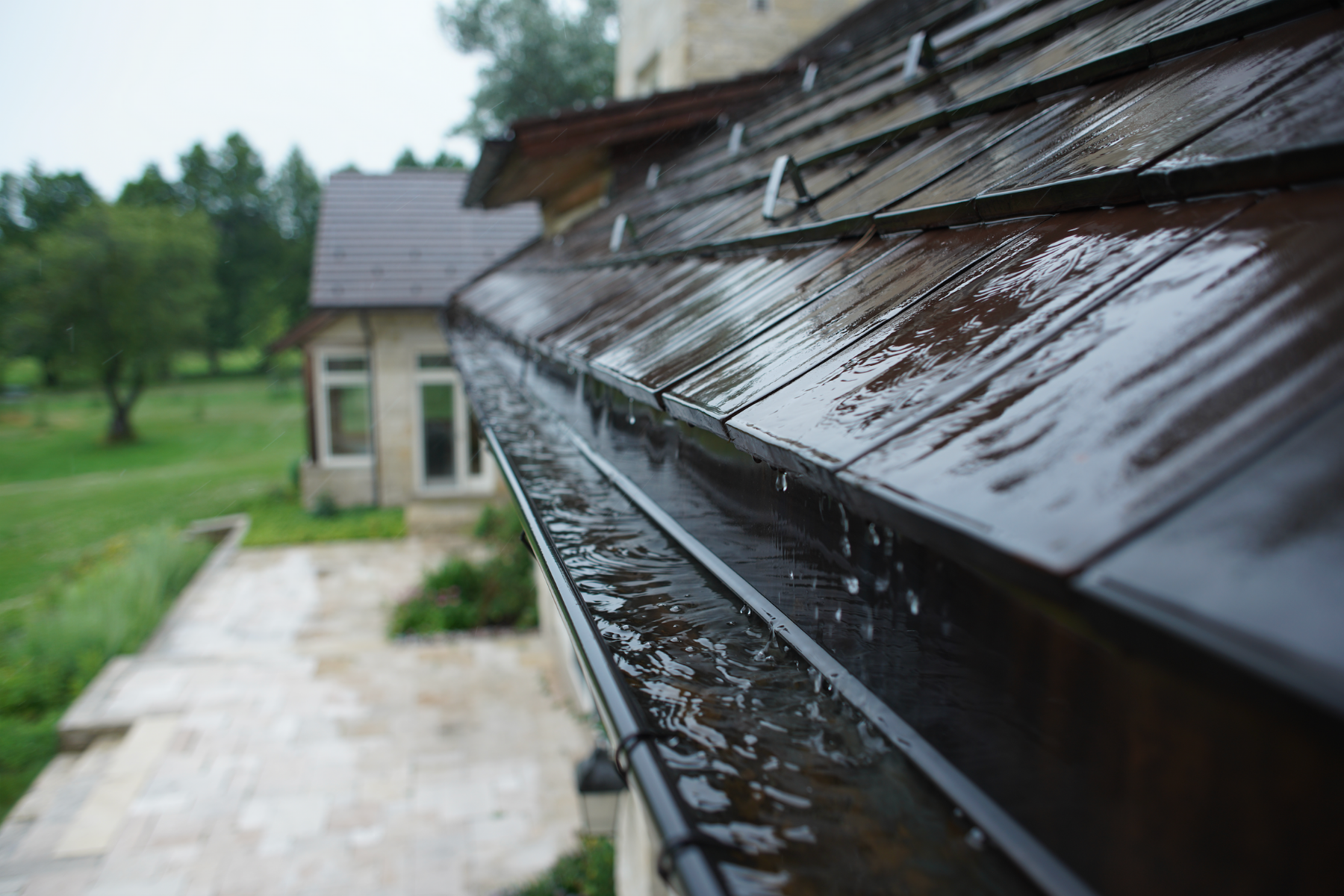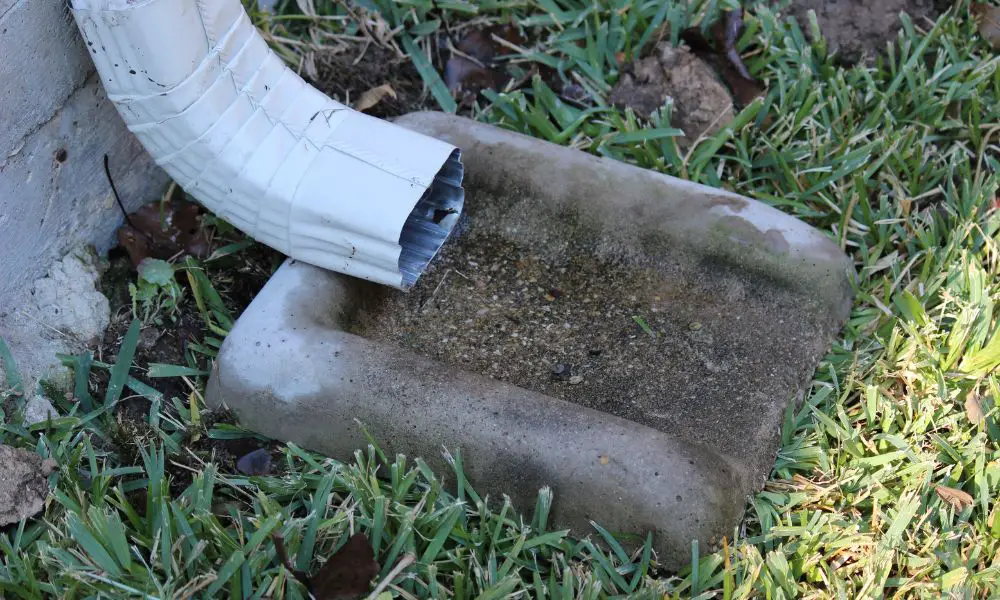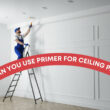Table of Contents Show
As an experienced homeowner and seasoned contractor, I’ve tackled numerous house projects, ensuring client satisfaction every step of the way. In this guide, we’ll focus on the practical steps to address and prevent gutter overflow, a common yet often overlooked issue in home maintenance.
Gutter overflow isn’t just a minor inconvenience; it can lead to serious problems like water damage to your home’s foundation, basement flooding, and even compromise the integrity of your walls and landscaping.
Understanding the causes and solutions is crucial for every homeowner. Whether you’re a DIY enthusiast or considering professional help, this guide will equip you with the knowledge and tools necessary for effective gutter maintenance.

What Causes Gutter Overflow?
Gutter overflow can be a nuisance, but understanding its causes is the first step to finding a solution. Here are the main factors contributing to this problem:
1. Debris Accumulation (Leaves, Twigs, etc.)
One of the most common reasons for gutter overflow is the accumulation of debris, such as leaves, twigs, and other natural materials.
Over time, these elements can build up, obstructing the flow of water and causing it to spill over the edges of the gutter. Regular cleaning, especially after fall and in spring, is essential to prevent this buildup and ensure smooth water flow.
2. Improper Gutter Installation
Another key factor is the installation of the gutters themselves. If gutters are not correctly aligned or installed at an inappropriate angle, they can’t effectively channel water away from your home.
This improper installation can lead to water pooling and eventually overflowing. Ensuring that gutters are installed with the correct slope and securely attached to the house is vital for their optimal functioning.
3. Clogged Downspouts
Clogged downspouts are also a major culprit in gutter overflow. When downspouts are blocked, water can’t flow away from the gutter system, leading to backups and overflows. Regular inspection and cleaning of downspouts are necessary to prevent blockages caused by debris, nests, or other obstructions.
4. Insufficient Gutter Size
Finally, the size of your gutters can play a significant role. If gutters are too small for the volume of water they need to handle, especially during heavy rains, they can easily overflow. Upgrading to larger gutters or adding additional downspouts may be required in areas with high rainfall or for roofs with a large surface area.
Tools and Materials Needed
For effective gutter maintenance and to fix gutter overflow, having the right tools and materials on hand is crucial. Here’s a straightforward list of what you’ll need:

- Ladder: A sturdy, extendable ladder is essential for safely reaching your gutters. Ensure it’s stable and suitable for the height of your home.
- Gloves: Durable gloves protect your hands from sharp debris and dirt while cleaning the gutters.
- Garden Hose: A hose with a spray nozzle will help flush out the gutters and downspouts after clearing the debris.
- Bucket or Trash Bags: These are useful for collecting debris as you clean the gutters.
- Gutter Scoop or Small Garden Trowel: These tools are handy for removing leaves and debris from the gutters.
- Screwdriver or Power Drill: These may be needed for adjusting or fixing gutter components.
- Non-Slip Shoes: Wear shoes with good grip to reduce the risk of slipping when working on the ladder.
- Safety Goggles: Protect your eyes from debris, especially when cleaning or flushing the gutters.
- Measuring Tape: If you’re considering gutter modifications, a measuring tape will be necessary for accurate measurements.
- Plumber’s Snake or Gutter Cleaning Tool: These are helpful for unclogging downspouts and hard-to-reach areas in the gutter system.
Step-by-Step Guide to Fixing Gutter Overflow
Fixing gutter overflow is a manageable task when approached methodically. Here’s a simple, step-by-step guide to help you tackle the issue:
Step 1: Safety First – Preparing for the Task
Before starting, ensure your safety. Place your ladder on stable, level ground. Wear non-slip shoes, gloves, and safety goggles. If you’re not comfortable working at heights or if your home is particularly tall, consider hiring a professional.
Step 2: Cleaning the Gutters
Begin by removing debris from the gutters. Climb the ladder and, using your gloves, gutter scoop, or trowel, clear out leaves, twigs, and sediment. Dispose of the debris in a bucket or trash bag. After scooping, flush the gutters with a garden hose to clear any remaining particles.
Step 3: Inspecting and Clearing Downspouts
Check the downspouts for blockages. If water isn’t flowing freely, use a plumber’s snake or a long stick to dislodge the clog. Flush the downspout with a hose to ensure it’s clear. Listen for the sound of water freely flowing to confirm the blockage is removed.
Step 4: Checking for Proper Gutter Slope and Alignment
Ensure your gutters are properly aligned. They should have a slight slope towards the downspouts for optimal water flow. Use a level to check the slope and adjust the gutter hangers if necessary. Also, make sure the gutters are securely attached to the house.
Step 5: Installing Gutter Guards (optional)
Consider installing gutter guards to reduce future debris accumulation. There are various types, such as mesh screens or foam inserts, that can be effective in keeping gutters clear. Follow the manufacturer’s instructions for installation.













